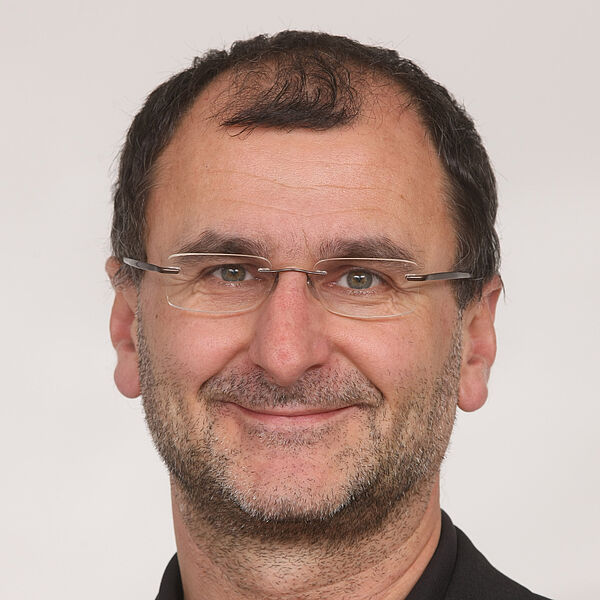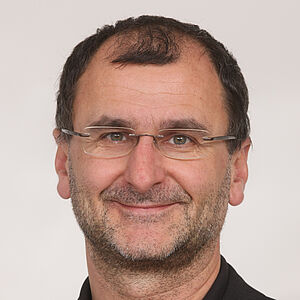
Prof. Dr. Christoph Brabec

Person
Prof. Christoph J. Brabec is a researcher for photovoltaics and printable semiconductors (organic, inorganic, hybrid). He is one of the top 100 best materials scientists in the world and number 12 in Thomson Reuter's ranking. He is also the most cited scientist in his field.
Curriculum Vitae
- 2018 – 2023: Appointment as Honorary Professor at the University Groningen
- 2018 – 2023: Appointment as Director at the Helmholtz Institute Erlangen-Nürnberg (HI-ErN), FZJ
- 2015 – 2017: Appointment as the Head of the Material Science and Engineering Department, Friedrich Alexander University Erlangen Nürnberg
- 2013 – 2016: Appointed as Head of Board of ZAE Bayern eV
- 2013: Appointed as Speaker of the International Center for Nanostructured Films (IZNF) at FAU Erlangen-Nürnberg
- 2010 – 2018: Appointment as Board Member of the Energy Campus Nürnberg (EnCN) eV
- 2009 – 2018: Appointment as Executive Board Member of the ZAE Bayern
- 2009 – ongoing: Appointment to the scientific director of the ZAE Bayern, Erlangen
- since 2009: Professor (W3), Institute Materials for Electronics and Energy Technology (i-MEET), Materials Science and Engineering Department, FAU Erlangen-Nürnberg
- 04/2006: Appointment to the CTO and Vice President at Konarka Technologies, Lowell, USA
- 2005: Appointment to the CEO for Konarka Austria and Konarka Nürnberg
- 08/2004: Appointment to Director of OPV at Konarka Technologies, Lowell, USA
- 2004 – 2009: Various positions at Konarka Technologies after a successful outsourcing of the organic photovoltaics activities from Siemens (PV research, organic semiconductor development, coating and printing process development, reliability, lifetime and product engineering)
- 2001 – 2004: Principal research scientist & project leader, Siemens Corporate Technology, Department Microsystems and Materials, Erlangen, Germany (solar cells, displays, electrochromic windows, photo- and X-Ray detectors)
- 1998 – 2001: Principal Investigator, CD Laboratory for Plastic Solar Cells, Linz, Austria (photovoltaics, printing and coating technologies, organic electronics)
- 1996: Sabbatical at the Institute for Polymers & Organic Solids at the University of California, Santa Barbara (Prof. Alan J. Heeger, Nobel laureate 2000 for Chemistry)
- 1995 – 1998: Research Assistant, Kepler University of Linz, Austria
- 1995: Promotion (Dr. tech), Institute of Physical Chemistry (Prof Schausberger, Prof Janeschitz-Kriegl), Johannes Kepler University Linz
- 1992 Physics Diploma, Johannes Kepler University of Linz, Theoretical Physics
Research Topics:
-
Development and investigation of solution processed solar cells, with a strong focus on the development of novel materials, investigation of microstructure and morphology formation in organic, hybrid and inorganic semiconductor composites and on fundamentals of thin film solar cells.
-
Development of low cost production technologies for semiconductor devices building on ultraprecision printing & coating technologies and ultrafast laser patterning.
-
Development of advanced optoelectronic devices for renewable energy applications like (i) 3rd generation solar cell technologies (ii) lighting and (iii) light management.
-
Development and application of non-destructive imaging methods for optoelectronic devices, like EL or IR imaging.
-
Development of combinatorial and high throughput methods for the discovery of energy materials and energy devices.
-
Renewable energy systems and components for energy generation and storage
Material-Genom: Automatisierte Erfindung, Synthese und Charakterisierung von Funktionsmaterialien
Zukunftsweisende Photovoltaiktechnologien: Materialien, Solarzellen, Grenzflächen und Herstellung
Beschleunigung der Forschung: Entwurf, Implementierung und Betrieb von Machine Learning unterstützten autonomen Forschungslaboren
Produktionsentwicklung: 2D- und 3D-Druckverfahren für die Herstellung neuartiger Halbleiterarchitekturen
Nachhaltigkeit: Geschlossene Arbeitsabläufe und C2C-Konzepte für fortschrittliche Halbleitertechnologien
Zuverlässigkeit von PV-Systemen: Bildgebende Überwachung von GW-Feldern und Vorhersage von Energieerträgen
1992 | Studium der Physik an der Johannes Kepler Universität in Linz |
1995 | Promotion an der Johannes Kepler Universität in Linz zum Thema „Rheologische Charakterisierung von Polymermischungen“ |
1996 | Forschungsaufenthalt am Institute for Polymers & Organic Solids at the University of California in Santa Barbara |
1995 - 1998 | Berufung zum Assistenzprofessor an der Johannes Kepler Universität Linz |
1998 - 2001 | Projektleiter eines CD-Labors für organische Solarzellen in Linz |
2001 - 2004 | Verantwortlicher Wissenschaftler und Projektleiter bei Siemens Corporate Technology in Erlangen |
2003 | Habilitation an der Johannes Kepler Universität in Linz |
2004 - 2009 | verschiedene leitende Funktionen in der Firma Konarka Technologies in den USA, Österreich und in Deutschland |
2009 | Berufung als W3-Professor an die Friedrich-Alexander-Universität Erlangen Nürnberg an das Institute of Materials for Electronics and Energy Technology (I.MEET) |
2009 | Berufung zur wissenschaftlichen Leitung des ZAE Bayern in Erlangen |
2010 | Vorstandsmitglied am Energie Campus Nürnberg e.V. |
2013 | Sprecher am Interdisziplinären Zentrum für Nanostrukturierte Filme (IZNF) |
2015 - 2017 | Leiter des Departments Werkstoffwissenschaften an der Friedrich-Alexander-Universität Erlangen-Nürnberg |
ab 2018 | Direktor am Institute of Energy and Climate Research – Helmholtz Institute Erlangen-Nürnberg für Erneuerbare Energien |
- “Inventor of the year” mit den meisten Patenten im Bereich organische Photovoltaik (2005)
- Aufgeführt unter den zehn meist zitiertesten Wissenschaftlern im Bereich organische Elektronik / Solarzellen (2007)
- Mitglied im Beratungsausschuss des Journals “Progress in Photovoltaics”, welches über die Onlinebibliothek Wiley VCH erscheint (2010)
- Vorstandsvorsitzender und Gründungsmitglied des Journals “Advanced Energy Materials”, welches über die Onlinebibliothek Wiley VCH erscheint (2009)
- Mitglied im Beratungsausschuss und Gründungsmitglied des Journals “Photonics for energy”, welches über die Onlinebibliothek SPIE erscheint (2010)
- Platz 12 der 100 besten Materialforscher im vergangenen Jahrzehnt (ausgezeichnet vom Institut Thomson Reuthers) (2011)
- Mitglied der Redaktionsleitung für das Journal “Emerging Materials Science”(2011)
- 95 Patente